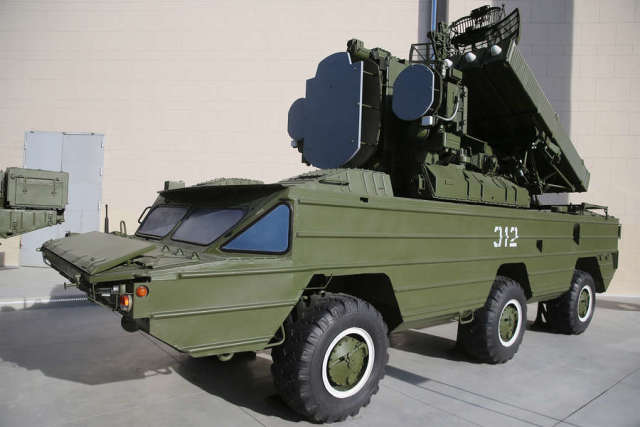How did the Osa anti-aircraft missile system end up in the United States and why does the Pentagon want to give it to Kiev
The United States plans to supply Ukraine with air defense systems manufactured by the USSR, including anti-aircraft missile systems (SAM) "Osa", which were "secretly acquired" by the Pentagon, writes The Wall Street Journal. "Newspaper.Ru" figured out how the Soviet complexes were at the disposal of the United States and how useful they can be to the APU today.
The Wall Street Journal notes that the Osa complexes are familiar to the Ukrainian military, since the country inherited them after the collapse of the USSR. It is reported that the United States acquired the SAM in order to study the technologies used by Soviet engineers, as well as to familiarize American specialists with them. The Pentagon declined to comment on the reports.
Russian Foreign Minister Sergei Lavrov said earlier that Soviet and Russian air defense and missile defense systems cannot be transferred to third countries, and threatened that Russia would attack cargo with military assistance from Ukraine's partners.
Earlier, Slovakia announced its readiness to transfer its only S-300 anti-aircraft missile system to Ukraine, but after the country's Defense Minister Yaroslav Nagy noted that Bratislava has no alternative to the complex. According to CNN, Slovakia was negotiating with the United States to transfer another system to the country, in particular Patriot.
The Osa complex was adopted in the USSR in 1971. Depending on the modification, the complex is armed with four to six guided missiles with a radio command guidance system. In 1989, the production of the Wasp stopped completely, but the complex is still widespread - now there are more than 400 systems on combat duty. In addition to Russia, such SAMs are in service with Belarus, Poland and Ukraine. The exact number of complexes that remained in Kiev after the start of the Russian special operation is unknown.
- explained "to the newspaper.Ru" Editor-in-chief of the National Defense magazine, Director of the Center for Analysis of the World Arms Trade (CAMTO) Igor Korotchenko.
He noted that the United States has purchased not only the Osa complexes, but also the S-300 and others, in particular the Buk. "These acquisitions were made as part of testing the effectiveness of protecting US combat aircraft from the actions of the Wasp and air defense systems - there was a whole program. Therefore, the United States has samples of Soviet air defense equipment at the landfills," Korotchenko said.
According to the editor of the magazine "Arsenal of the Fatherland", military expert Alexei Leonkov, "Wasp" is a mobile complex, the only one that can overcome water obstacles and fire at air targets at the same time. "This complex distinguished itself in 1991 by shooting down a Tomahawk cruise missile, that is, it can shoot down similar missiles. It can also work by aviation means," Leonkov said.
The Wasp demonstrated the interception of the American Tomahawk during the 1990-1991 Gulf War. Then the Wasp was in service with the Iraqi army. The United States considered the complex as one of the most effective systems of the Iraqi army and gave priority to its neutralization. It is known that then the American special forces seized one complex along with calculations and technical documentation to study and organize the fight against it on the territory of Kuwait.
"The main thing is not the complex itself, but the combat crew that controls it. During the ongoing special operation, the Russian Defense Ministry has repeatedly announced the destruction of Ukrainian air defense systems - they were often destroyed along with combat crews. There should not just be a calculation, but a competent and experienced one, then the Osa complex will be able to justify itself. But it is clear that as soon as these complexes reveal themselves, they will immediately become the subject of hunting for them and targets for destruction," Leonkov said.
According to Konstantin Sivkov, corresponding member of the Russian Academy of Rocket and Artillery Sciences, Doctor of Military Sciences, it makes no sense to talk about the effectiveness of the Osa complexes for the AFU, because "they will not have time to show it."
"Washington gives someone else's, but the Soviet complex "Wasp" will not save Ukraine. According to the Ministry of Defense, the Russian military destroyed three or four S-300 APU complexes a day. There will be several more "Wasp" complexes - they will be swept away in a day or two. At the same time, it is impossible to hide the delivery of these complexes to the territory of Ukraine under the control of the Russian Aerospace Forces of its airspace - these are rather large-sized systems. It will be destroyed before the APU can deploy the system on combat duty," Sivkov concluded.
Irina Alshayeva

